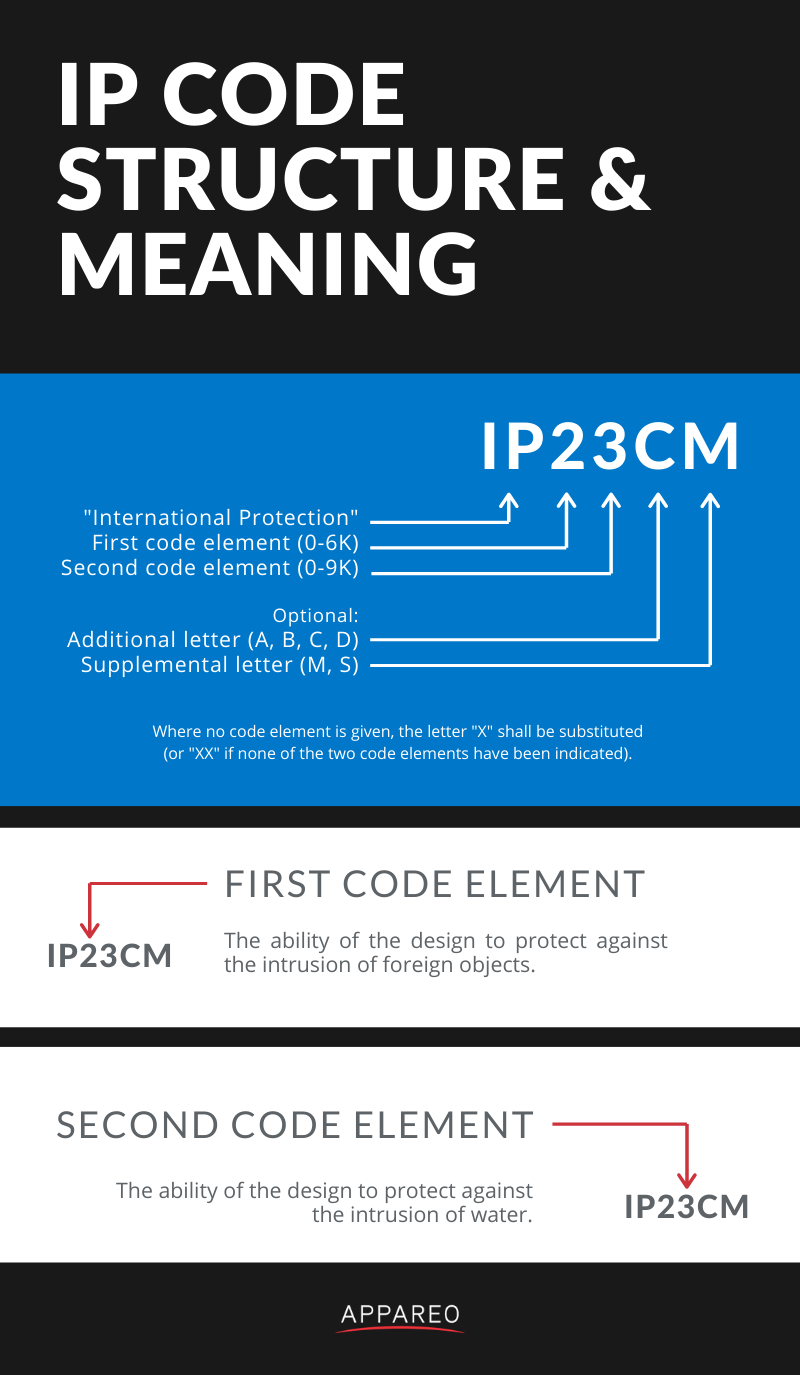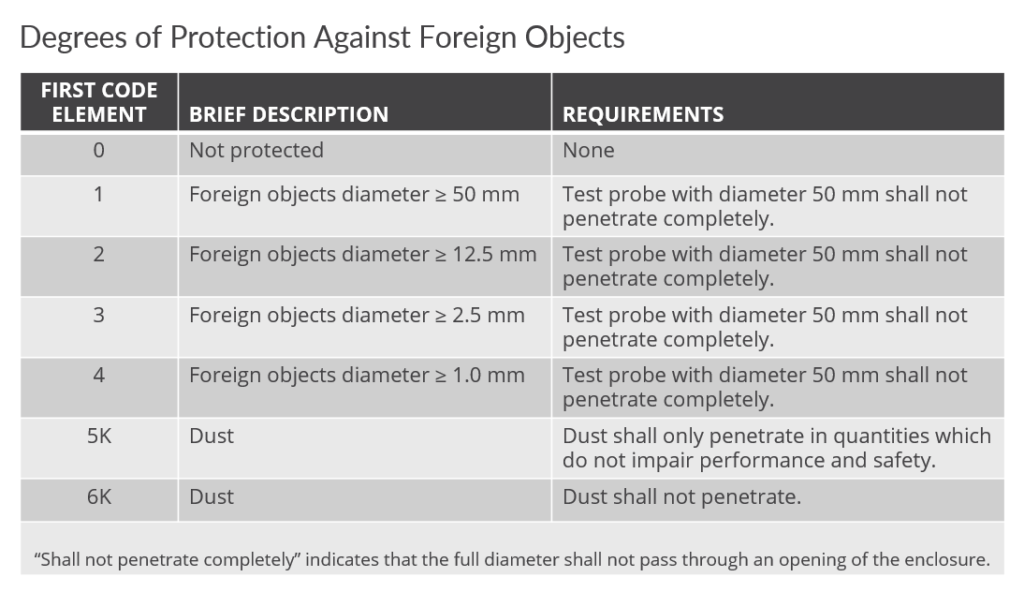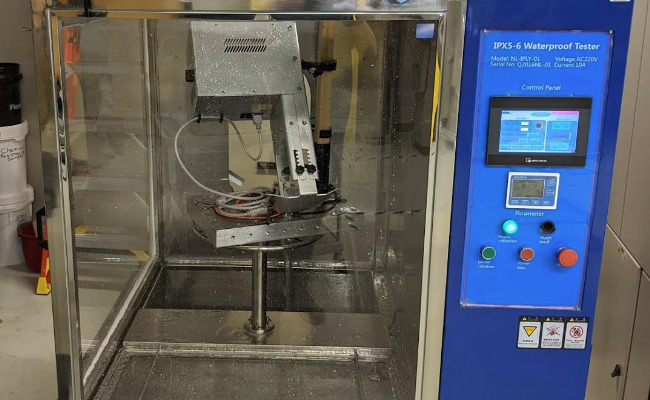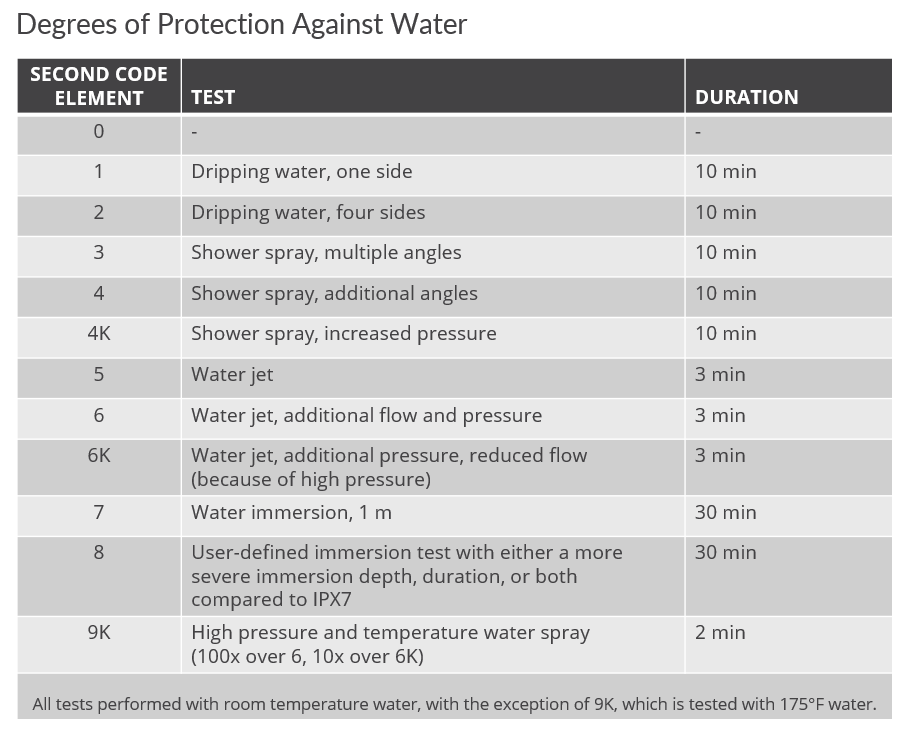Tag Archives for " IP67 "
Understanding IP Ratings for Rugged Electronics
For many years, electronics manufacturers have utilized environmental testing to simulate years of product use in the field. As products fail, teams of engineers have dug into each of these failures to understand them, build better tests to simulate the conditions that created them, and use those tests in design validation to ensure that such failures don’t occur in the field again. In general, environmental tests include a broad spectrum of different challenges to ensure a robust design.
Some common tests are:
- Power input – trying to damage the product by simulating bad power connections or incorrect power supply
- Transit shock – trying to introduce damage from mishandling during shipping
- Particle impact – trying to damage the product due to particles thrown by tires, air blasts, etc.
- Electrostatic discharge – trying to electrically shock the product and damage it
- Chemical resistance – trying to damage the product by exposure to hazardous chemicals potentially occurring in the operating environment
- Ultraviolet effects – trying to damage the product through environmental exposure to light
- Temperature & humidity testing – cycling the product through many cycles of high temperature, humidity, and low temperature to simulate many seasons of outdoor exposure
- Thermal shock – trying to damage the product through temperature shock
- Vibration and shock testing – trying to shake and shock the product into a damaged state
These tests are described by a series of industry standards and tests. One of the most common ratings for environmental suitability seen today in product specifications and datasheets is the IP rating.
What is the “IP Rating”?
In this context IP stands for International Protection Rating, but is often read as Ingress Protection. Looking at this rating provides a more nuanced and descriptive articulation of product capabilities than “water resistant” or “dustproof.” These ratings are described in standards like IEC 60529, DIN 40050-9, and ISO 20563 (which replaced DIN 40050-9). Testing against these ratings produces IP ratings like IP44, IPX5, IP5X, IP65/67, etc.

What does the first number mean?
The first number is associated with the ability of the design to protect against the intrusion of foreign objects that could cause damage to the device or cease its function. The higher the number, the smaller the particle necessary to get inside the device.

Below is an example of the 6K variety of the ISO 20653 test. In this test, to ensure dust will not penetrate the enclosure design, a vacuum is pulled on the device to ensure that it is dust tight. You can see that the enclosure is entirely caked in fine dust after the test.
What does the second number mean?
 The second number is associated with the ability of the design to protect against intrusion of water. The higher the number, the more sealed the device against intrusion of water. When higher numbers are reached, however, there is some nuance as to the method of testing that becomes important. For example, IP69 is not necessarily better sealed than IP67 — they are both very well sealed, just tested against different areas of concern.
The second number is associated with the ability of the design to protect against intrusion of water. The higher the number, the more sealed the device against intrusion of water. When higher numbers are reached, however, there is some nuance as to the method of testing that becomes important. For example, IP69 is not necessarily better sealed than IP67 — they are both very well sealed, just tested against different areas of concern.

What about other ratings?
Manufacturers only publicly rate devices to what they have actually tested against. For example, a device might be tested against IP69K and be totally suited for use in an IP67 environment, but the manufacturer’s initial customer didn’t require the IP67 test, so it was never run. Vice versa, sometimes designs are capable of qualifying and passing higher levels of ingress certification than publicly rated for — especially as it pertains to the difference between IP67 and IP69K.
If you see an ingress certification rating for a device that does not meet your specification as an equipment manufacturer, don’t be afraid to ask your device manufacturer about the device’s suitability for a similar rating.
 Nathan Schneck – Director, Test & Certification
Nathan Schneck – Director, Test & Certification
https://www.appareo.com/2020/10/06/understanding-ip-ratings-for-rugged-electronics/
Appareo Releases New Telematics Gateway with 4G/3G/2G and U.S., EU, Brazilian, and Other Certifications Enabled by Onboard eSIM
NEWS RELEASE
Appareo Releases New Telematics Gateway with 4G/3G/2G and U.S., EU, Brazilian, and Other Certifications Enabled by Onboard eSIM
FARGO, North Dakota (August 20, 2020) — Appareo today released a new product in the company’s award-winning line of telematically-enabled electronic control units (ECUs). The Gateway 270 is a rugged IP67-rated edge computing platform for mobile equipment applications. This device is deployable in a broad range of North American, South American, and European markets, making it ideal for equipment manufacturers with broad geographic distribution.
Like other 200 series Appareo Gateways, this product contains an array of wired and wireless communication technologies, making it well suited for a broad spectrum of equipment control, monitoring, and connectivity challenges. The Gateway 270 contains Wi-Fi, Bluetooth, LTE (4G) cellular connectivity with 3G/2G fallback, BroadR-Reach, Ethernet, GPS, CAN, and RS-232 serial communications.
Gateway 270 is built on a popular distribution of embedded Linux (Yocto) with Docker support, allowing a convenient development environment for both developers to work on the Gateway using C++, C#, or other common development languages. This flexibility and approachability allows Appareo customers to use a variety of approaches and resources to achieve the maintenance, service, and operational benefits of a highly-capable telematics product.
“Appareo is really excited about this product and its broad geographical potential. Having three generations of cellular technology, coupled with the eSIM, and certified in historically challenging deployment geographies like Brazil will provide major logistic convenience and SKU simplification for our global customers,” said David Batcheller, President and CEO of Appareo.
To maximize the geographic potential of the Gateway 270 Appareo worked with carrier partners Vodafone International and TaTa Communications. The capabilities of Appareo’s carriers, coupled with Appareo’s Data Services Platform infrastructure, delivers convenient device and subscription management over web-based or API interfaces for management of a few—or a few thousand—connected vehicles.
To contact Appareo, acquire a development kit, and begin working with Appareo Gateways, visit appareo.com/gateways.
Appareo Gateway Series:
# # #
About Appareo
Appareo is a recognized leader in the custom design, development and manufacture of innovative electronic and software solutions for aerospace and terrestrial applications. Through the creative application of cutting-edge technologies, Appareo creates complex end-to-end solutions that include both mobile and cloud-based components. The company is privately held, with headquarters in Fargo, N.D., and a design office in Paris, France. All products are built and supported in the USA.
Product Photos
Download photos from our Online Media Kit.
https://www.appareo.com/2020/08/20/appareo-releases-new-telematics-gateway-with-4g-3g-2g-and-u-s-eu-brazilian-and-other-certifications-enabled-by-onboard-esim/

